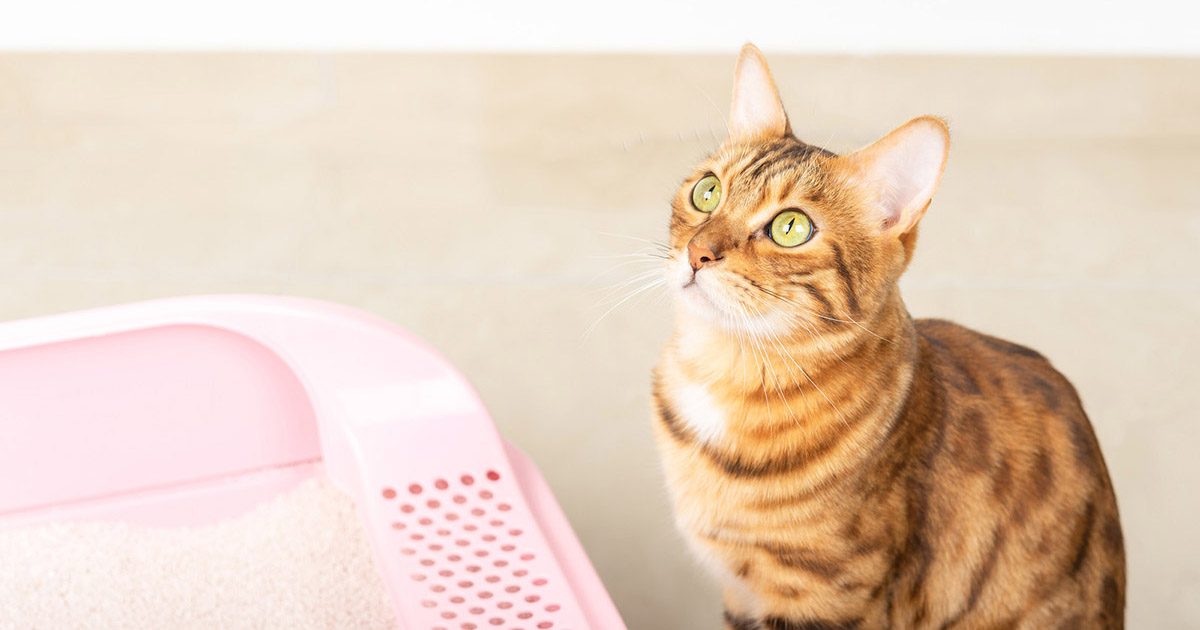The Risks of Disposing Cat Poop in Your Toilet - Precautionary Steps
The Risks of Disposing Cat Poop in Your Toilet - Precautionary Steps
Blog Article
We've stumbled on this great article involving Don’t flush cat feces down the toilet listed below on the internet and thought it made good sense to relate it with you in this article.

Intro
As pet cat proprietors, it's essential to be mindful of exactly how we deal with our feline pals' waste. While it might appear hassle-free to purge feline poop down the toilet, this method can have destructive consequences for both the atmosphere and human wellness.
Ecological Impact
Flushing cat poop introduces dangerous virus and bloodsuckers right into the water supply, posing a significant risk to aquatic communities. These pollutants can negatively impact aquatic life and concession water high quality.
Health and wellness Risks
In addition to environmental problems, purging feline waste can additionally present health threats to people. Cat feces may include Toxoplasma gondii, a bloodsucker that can trigger toxoplasmosis-- a potentially serious health problem, specifically for pregnant females and people with damaged body immune systems.
Alternatives to Flushing
The good news is, there are safer and much more accountable methods to take care of feline poop. Consider the complying with choices:
1. Scoop and Dispose in Trash
One of the most common method of taking care of feline poop is to scoop it right into a naturally degradable bag and throw it in the trash. Make sure to utilize a specialized clutter inside story and dispose of the waste immediately.
2. Use Biodegradable Litter
Go with naturally degradable pet cat clutter made from products such as corn or wheat. These litters are environmentally friendly and can be safely dealt with in the trash.
3. Hide in the Yard
If you have a backyard, take into consideration burying feline waste in an assigned location far from vegetable yards and water resources. Be sure to dig deep adequate to avoid contamination of groundwater.
4. Set Up a Pet Waste Disposal System
Purchase an animal garbage disposal system especially developed for pet cat waste. These systems use enzymes to break down the waste, lowering odor and ecological influence.
Conclusion
Responsible pet dog ownership extends past supplying food and sanctuary-- it likewise entails proper waste administration. By avoiding flushing cat poop down the commode and going with alternate disposal techniques, we can minimize our environmental footprint and protect human wellness.
Why You Should NEVER Flush Cat Poop (and/or Litter) Down Your Toilet
The Problem with Litter
The main function of litter is to solidify and adhere to your cat’s waste. While this makes litter excellent for collecting cat poop and urine, it’s also the exact property that makes it a nightmare when flushed down the toilet.
Cat litter can and will clog pipes. There is non-clumping litter, but it’s still quite heavy and can build up in pipes. This is true even of supposed “flushable litter.”
The problems only compound when the litter is already clumped into cat waste. Toilet paper is among the more flushable things, and even too much of that will clog a toilet.
The Problem with Cat Poop
Sewers and septic systems are designed with human waste in mind. The microbes that help break down human waste don’t work on cat waste. Additionally, cat poop plays host to the parasite Toxoplasma gondii.
When flushed, this parasite can enter the environment in places it was never meant to, posing a risk to pregnant women, their unborn children, and other people with compromised immune systems. While it might not seem possible, flushing cat poop can indeed introduce this parasite to the public water supply.
These reasons are why, even if you’ve trained your cat to go on the toilet and flush, which is possible, it’s still not a good idea. Also, pregnant women and the immunocompromised shouldn’t change litter, either.
How to Handle Litter
The best way to handle litter is to simply put it in a plastic bag and place it in the trash. Avoiding environmental risks and possible plumbing damage is worth the extra effort.
You can also invest in devices that seal away your cat’s waste in a separate compartment, so you don’t have to change the litter nearly as often. They’re also safer for pet owners because they limit the possibility of Toxoplasma gondii exposure.
Disposing of litter the old-fashioned way will ensure you won’t have to worry about any issues that flushing the waste can potentially cause.
Take Care of Clogged Pipes with Stephens Plumbing, Heating & Air Conditioning
The reasons you should never flush cat poop down your toilet are numerous, but sometimes the inevitable happens despite your best efforts.
Stephens Plumbing, Heating & Air Conditioning is ready to help if you’re experiencing litter-blocked plumbing. Whether you need us in an emergency or want to schedule regular maintenance, we’re here for you.
https://www.stephensplumbing.net/bathroom-plumbing/never-flush-cat-poop-down-your-toilet/

We were shown that write-up on How to Dispose of Cat Poop and Litter Without Plastic Bags through someone on our other web property. Do you know somebody who is in the market for the topic? Feel free to share it. Thanks for your time. Don't forget to check up our site back soon.
Call Today Report this page